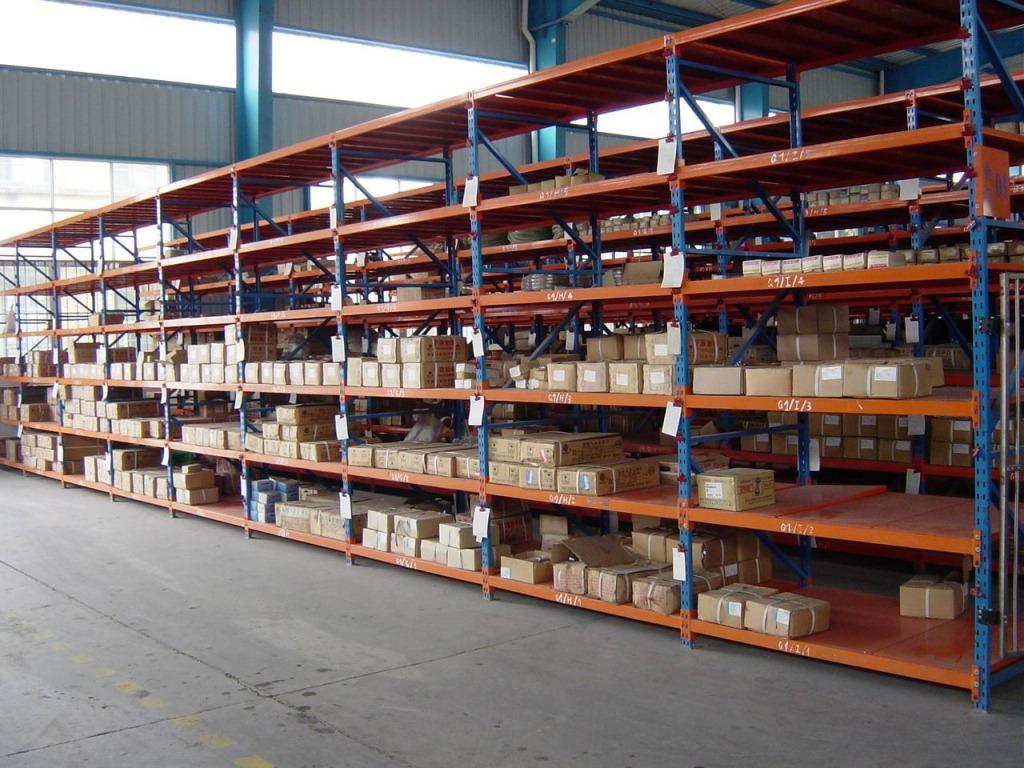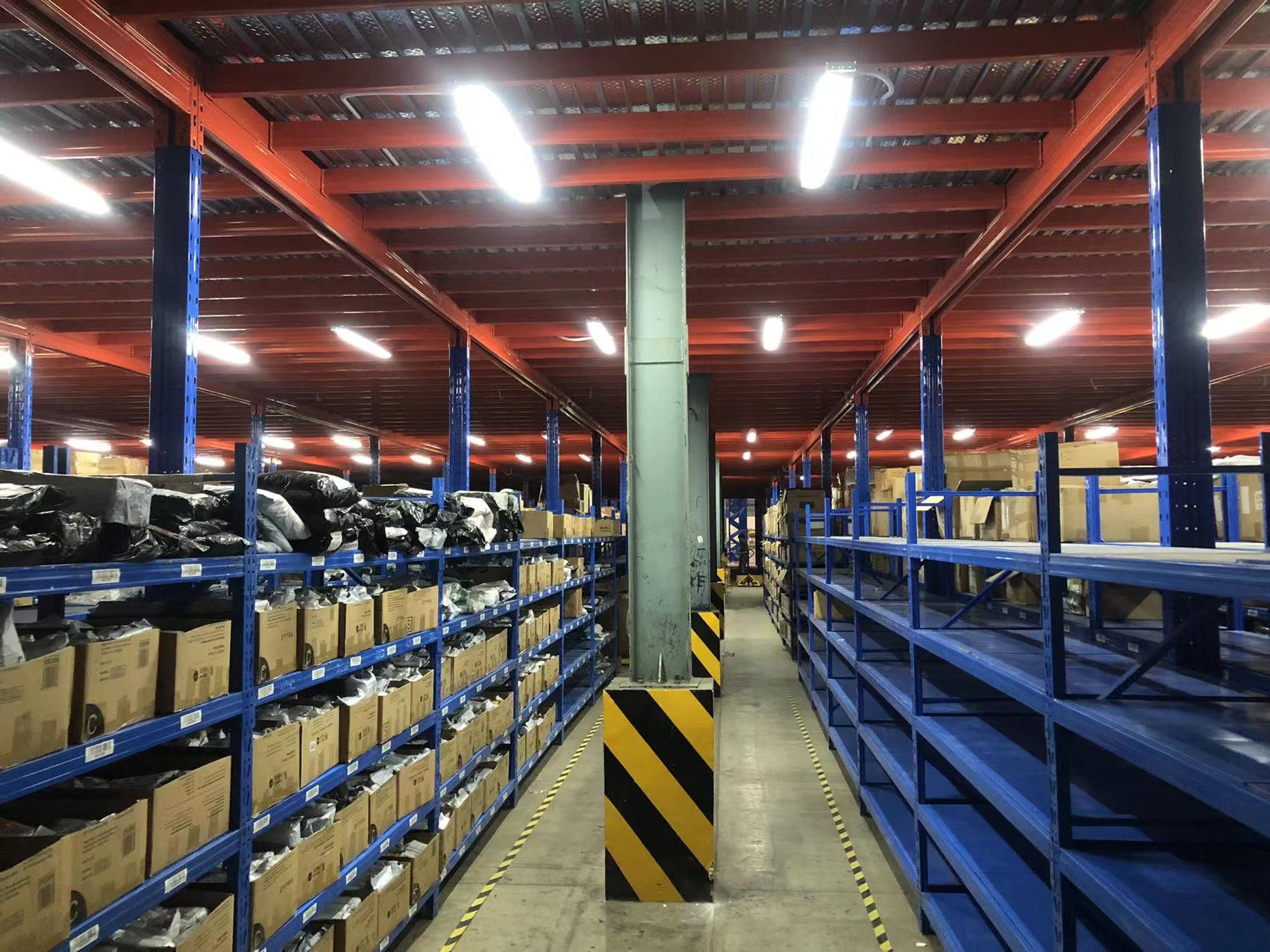In today's fast-paced industrial and logistics sectors, efficiency and accuracy are paramount. Automated rack storage systems have emerged as a game-changing solution, revolutionizing how businesses manage inventory and optimize space. These systems leverage advanced technology to automate the storage and retrieval processes, reducing human intervention and minimizing errors. From e-commerce giants to manufacturing plants, organizations are increasingly adopting automated rack storage systems to enhance productivity, cut costs, and improve safety. But what exactly are these systems, and how do they work? In this article, we'll delve into the core aspects of automated rack storage systems, covering their components, benefits, types, implementation challenges, and common questions. By the end, you'll have a comprehensive understanding of why these systems are becoming indispensable in modern supply chains.

Automated rack storage systems are sophisticated storage solutions designed to automatically store and retrieve goods with minimal human involvement. They integrate hardware like racks, conveyors, and robotic devices with software controls to manage inventory efficiently. Typically used in warehouses, distribution centers, and manufacturing facilities, these systems rely on technologies such as robotics, sensors, and computer-based management systems to handle pallets, bins, or other storage units. The primary goal of automated rack storage systems is to maximize storage density, accelerate operations, and reduce labor costs. For instance, in a high-volume fulfillment center, an automated rack storage system can swiftly locate and retrieve items based on real-time orders, streamlining the entire logistics process. By automating repetitive tasks, these systems free up human workers for more complex roles, thereby boosting overall operational efficiency. Moreover, they are highly scalable, making them suitable for businesses of all sizes looking to adapt to fluctuating demand.
The evolution of automated rack storage systems dates back to the mid-20th century, with early versions focusing on basic mechanized racks. Today, they incorporate Internet of Things (IoT) connectivity, artificial intelligence (AI), and data analytics for predictive maintenance and optimized storage patterns. As industries embrace Industry 4.0, the demand for intelligent automated rack storage systems continues to grow, driven by the need for faster, more reliable inventory management. Understanding the fundamentals of these systems is crucial for any business considering an upgrade to their storage infrastructure.
To fully appreciate how automated rack storage systems function, it's essential to break down their core components. Each part plays a vital role in ensuring seamless automation and efficiency. First, the storage racks themselves form the backbone of the system. These are often high-density structures, such as pallet racks or cantilever racks, designed to hold goods securely. In automated rack storage systems, these racks are integrated with retrieval mechanisms, allowing for vertical and horizontal movement.
Another critical component is the automated guided vehicles (AGVs) or robotic shuttles. These devices travel along predefined paths within the rack system to store and retrieve items. They are equipped with sensors and navigation systems to avoid obstacles and ensure precise positioning. For example, in an AS/RS (Automated Storage and Retrieval System), robotic cranes move vertically and horizontally to access specific storage locations, reducing the time needed for manual picking.
The control software is the brain behind automated rack storage systems. This includes warehouse management systems (WMS) and warehouse control systems (WCS) that coordinate all activities. The software processes data from inventory databases, order systems, and sensors to optimize storage layouts, track inventory in real-time, and schedule retrievals. Advanced algorithms in these systems can predict demand patterns, suggesting optimal storage strategies to minimize retrieval times and maximize space utilization.
Additionally, conveyance systems like conveyors and lifts transport items to and from the storage racks. These are often customized to fit the specific layout of a facility, ensuring smooth material flow. Safety features, such as emergency stop mechanisms and collision avoidance systems, are integral to automated rack storage systems to protect both equipment and personnel. Lastly, integration interfaces allow these systems to communicate with other enterprise software, such as ERP systems, creating a cohesive operational environment. By understanding these components, businesses can better assess their needs when implementing automated rack storage systems.

Implementing automated rack storage systems offers numerous advantages that can transform warehouse operations. One of the most significant benefits is increased storage density. By utilizing vertical space and compact designs, these systems can store more goods in a smaller footprint compared to traditional shelving. For instance, high-rise automated rack storage systems can reach heights of over 100 feet, dramatically expanding storage capacity without requiring additional floor space. This is particularly valuable in urban areas where real estate costs are high.
Another key benefit is enhanced efficiency and productivity. Automated rack storage systems drastically reduce the time required for storing and retrieving items. With automation, tasks that once took hours can be completed in minutes, leading to faster order fulfillment and reduced lead times. This efficiency translates into higher throughput, enabling businesses to handle larger volumes of goods without proportional increases in labor. Moreover, these systems operate 24/7 with minimal downtime, ensuring continuous operations even during peak seasons.
Cost savings are a major driver for adopting automated rack storage systems. While the initial investment can be substantial, the long-term reductions in labor costs, energy consumption, and error-related losses justify the expense. Automation reduces the need for manual labor, allowing companies to reallocate staff to value-added tasks. Additionally, improved inventory accuracy minimizes losses from misplaced or damaged goods, while energy-efficient designs lower utility bills.
Safety improvements are also notable. Automated rack storage systems minimize human interaction with heavy machinery and high-level storage, reducing the risk of accidents and injuries. Features like automated monitoring and emergency protocols further enhance workplace safety. Furthermore, these systems provide superior inventory control through real-time tracking and data analytics, enabling better decision-making and compliance with regulatory standards. Overall, the benefits of automated rack storage systems make them a wise investment for businesses aiming to stay competitive.
Automated rack storage systems come in various types, each suited to different operational needs and environments. Understanding these variations helps in selecting the right system for a specific application. One common type is the Unit-Load AS/RS, designed for handling large, uniform loads such as pallets. These systems use cranes or shuttles to move entire units in and out of storage, making them ideal for manufacturing and bulk distribution centers. They are highly efficient for high-throughput operations where consistency in load size is maintained.
Another popular variant is the Mini-Load AS/RS, which handles smaller items like bins or cases. This type is often used in e-commerce or pharmaceutical industries where order picking involves numerous small parts. Mini-load systems typically feature robotic arms or shuttles that retrieve individual bins and deliver them to pick stations, streamlining the fulfillment process. The flexibility of mini-load automated rack storage systems allows for high-density storage of diverse products.
Carousel-based systems represent another category, including horizontal and vertical carousels. These systems rotate storage bins or trays to bring items directly to operators, reducing walking time and increasing pick rates. Vertical carousel automated rack storage systems are especially space-efficient, as they use vertical movement to conserve floor space. They are commonly found in libraries, retail backrooms, and healthcare facilities for managing small to medium-sized items.
Shuttle-based systems are gaining traction for their adaptability and speed. In these automated rack storage systems, autonomous shuttles move within the rack structure to store and retrieve goods. They can operate in both single-deep and multi-deep configurations, offering scalability for various warehouse layouts. Lastly, there are hybrid systems that combine elements of different types to meet unique requirements. For example, some automated rack storage systems integrate AGVs with traditional racks for flexible material handling. By evaluating factors like load size, throughput, and space constraints, businesses can choose the most appropriate type of automated rack storage systems for their operations.
Despite their advantages, implementing automated rack storage systems can present several challenges that businesses must address to ensure success. One of the primary hurdles is the high initial cost. The investment includes not only the hardware and software but also installation, integration, and training expenses. For small to medium-sized enterprises, this can be a significant barrier. However, many companies find that the long-term savings and efficiency gains justify the upfront expenditure. Proper financial planning and exploring financing options can mitigate this challenge.
Integration with existing systems is another common issue. Automated rack storage systems need to seamlessly connect with current warehouse management software, ERP systems, and material handling equipment. Incompatibilities can lead to operational disruptions and data silos. To overcome this, businesses should conduct thorough compatibility assessments and work with vendors who offer customizable solutions. Phased implementation strategies can also ease the transition, allowing for testing and adjustments along the way.
Maintenance and technical support are critical for the longevity of automated rack storage systems. These systems rely on complex machinery and software, which require regular upkeep to prevent breakdowns. Downtime can be costly, so proactive maintenance schedules and access to reliable technical support are essential. Training staff to handle basic troubleshooting and updates can reduce dependency on external providers. Additionally, investing in systems with predictive maintenance capabilities, using IoT sensors, can help anticipate issues before they escalate.
Space and layout constraints can also pose challenges. Retrofitting automated rack storage systems into existing facilities may require structural modifications or reconfiguration of workflows. It's important to conduct a detailed site analysis and involve engineers early in the planning phase. Lastly, resistance to change among employees can hinder adoption. Providing comprehensive training and highlighting the benefits of automation, such as reduced physical strain and enhanced job roles, can foster acceptance. By anticipating these challenges, businesses can develop effective strategies for a smooth implementation of automated rack storage systems.
When considering automated rack storage systems, many businesses have common questions. Addressing these FAQs can help clarify doubts and guide decision-making. One frequent question is, "How much do automated rack storage systems cost?" The cost varies widely based on factors like system type, size, and customization. Basic mini-load systems might start at $100,000, while large-scale unit-load systems can exceed $1 million. It's advisable to request quotes from multiple vendors and consider total cost of ownership, including maintenance and potential ROI from efficiency gains.
Another common query is, "What are the space requirements for automated rack storage systems?" These systems are designed to maximize vertical space, often requiring less floor area than traditional racks. However, ceiling height, floor load capacity, and access points must be evaluated. A professional assessment can determine if a facility is suitable or if modifications are needed. For instance, some automated rack storage systems can be installed in buildings with low ceilings by using horizontal configurations.
Businesses also ask, "How reliable are automated rack storage systems?" Modern systems are highly reliable, with uptime rates often exceeding 95%. Redundancy features, such as backup power and duplicate components, enhance reliability. Regular maintenance and software updates further ensure consistent performance. It's crucial to choose reputable manufacturers with strong support networks to address any issues promptly.
"Can automated rack storage systems handle different types of inventory?" is another popular question. Yes, these systems are versatile and can be configured for various goods, from small parts to large pallets. Customizable options like adjustable shelving and climate controls allow them to handle sensitive items, such as pharmaceuticals or electronics. Finally, many wonder about the implementation timeline. A typical project for automated rack storage systems can take several months to a year, depending on complexity. Phased rollouts and clear project management can help meet deadlines without disrupting operations.
The future of automated rack storage systems is shaped by emerging technologies and evolving industry demands. One major trend is the integration of artificial intelligence and machine learning. AI-powered automated rack storage systems can analyze data to optimize storage patterns, predict maintenance needs, and adapt to changing inventory flows. For example, machine learning algorithms can identify seasonal trends and automatically reorganize storage for maximum efficiency, reducing operational costs.
Another trend is the rise of IoT connectivity. IoT-enabled automated rack storage systems use sensors to monitor conditions like temperature, humidity, and equipment status in real-time. This data is transmitted to central systems for proactive decision-making, enhancing both efficiency and safety. In cold storage facilities, for instance, IoT integration ensures that perishable goods are maintained at optimal conditions, minimizing spoilage.
Sustainability is also becoming a key focus. Future automated rack storage systems are likely to incorporate energy-efficient designs, such as regenerative braking in cranes and solar-powered components. This aligns with global efforts to reduce carbon footprints and operational costs. Additionally, modular and scalable designs will allow businesses to easily expand or reconfigure their systems as needs change, without significant downtime.
Collaborative robotics, or cobots, are set to play a larger role in automated rack storage systems. Unlike traditional robots, cobots can work alongside humans, handling tasks like sorting and picking in shared spaces. This hybrid approach combines the speed of automation with the flexibility of human workers, ideal for dynamic environments. As these trends evolve, automated rack storage systems will become even more intelligent, adaptable, and integral to supply chain success.
In conclusion, automated rack storage systems offer a transformative approach to modern storage challenges, providing benefits in efficiency, cost savings, and safety. By understanding their components, types, and implementation considerations, businesses can make informed decisions. As technology advances, these systems will continue to evolve, driving further innovations in logistics and warehousing. If you're considering an upgrade, now is the time to explore how automated rack storage systems can benefit your operations.
 Wechat
Wechat
 Whatsapp
Whatsapp